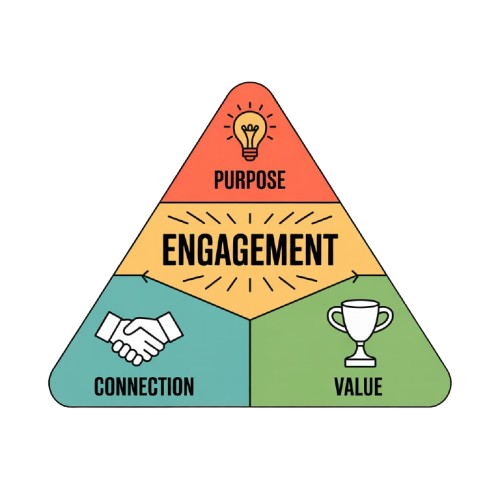

The strongest online communities aren’t built through growth hacking or vanity metrics (Such as the Indian Online Business Community by Instamojo and IACC Karnataka). They’re built through consistent, honest actions that create belonging and foster community engagement.
Every successful community building effort follows a simple truth: Purpose + Connection + Value = Engagement. When members feel they’re part of something meaningful, community growth happens naturally.
The old community building model treats the process as something organizers create and members consume. This approach to building online communities difficult to sustain.
Smart community leaders understand a simple truth: The best online communities are built with members, not for them.
This isn’t just theory, it’s practical. When Microsoft launched its MVP community, it didn’t dictate the structure. Instead, it created minimal structure and invited its most engaged users to shape the environment. The result? A self-sustaining community ecosystem where members create 80% of the value.

Community engagement strategies don’t need grand gestures. Successful community building thrives on small, regular actions:
These small habits add up over time. One community we studied increased member retention by 37% simply by ensuring every new member received a personal welcome and one meaningful interaction in their first week.
Content in online communities works differently than marketing content. It’s not just meant to inform, it’s designed to spark discussion and increase user interaction.
The most effective community content strategy follows a 3:1 ratio: for every three articles of informational content, create one piece specifically designed to invoke conversation. These conversation starters often take the form of:
What makes online communities powerful is often what makes them hard to measure. Connection, belonging, and mutual support don’t fit neatly into analytics dashboards.
Yet measuring community success remains essential. The best community builders track both numbers (participation rates, community retention) and feelings (sentiment, relationship formation).
One simple but effective approach: regularly ask members to complete this sentence: “This community matters to me because _______.” The answers reveal what truly drives engagement in your community platform.

No community exists in isolation. The most active online communities seek partnerships that expand what they can offer.
This doesn’t mean corporate sponsorships, though those can help. It means finding complementary niche communities, thought leaders, and organizations that share your values and can create mutual benefit.
When a programming community partnered with local bootcamps, both sides won,students gained access to real-world mentorship, while the community received fresh perspectives and energy, creating greater community vitality.
In virtually every online community, participation follows a pattern:
This isn’t a failure; it’s human nature. The mistake in community management is trying to turn all watchers into creators.
Instead, successful community design values all three types of participation. They recognize that the quiet majority often gets significant value even without actively contributing.
Also Read: Elevate your Birthday Bash with Pinch!
©2025 Pinch - All Rights Reserved.